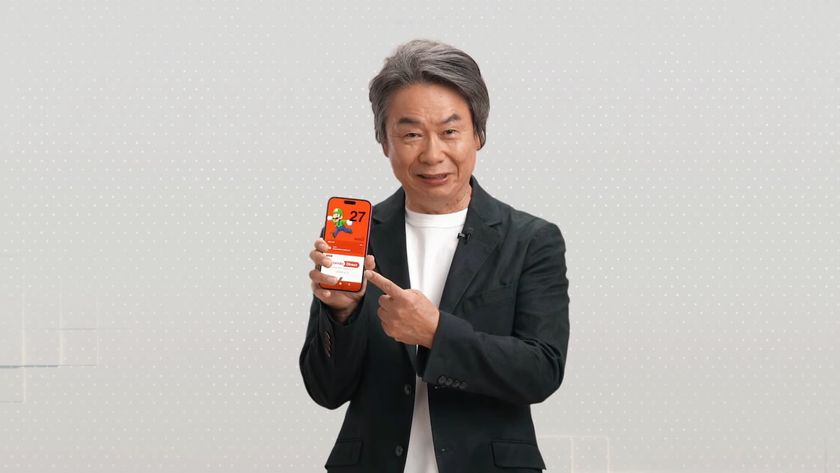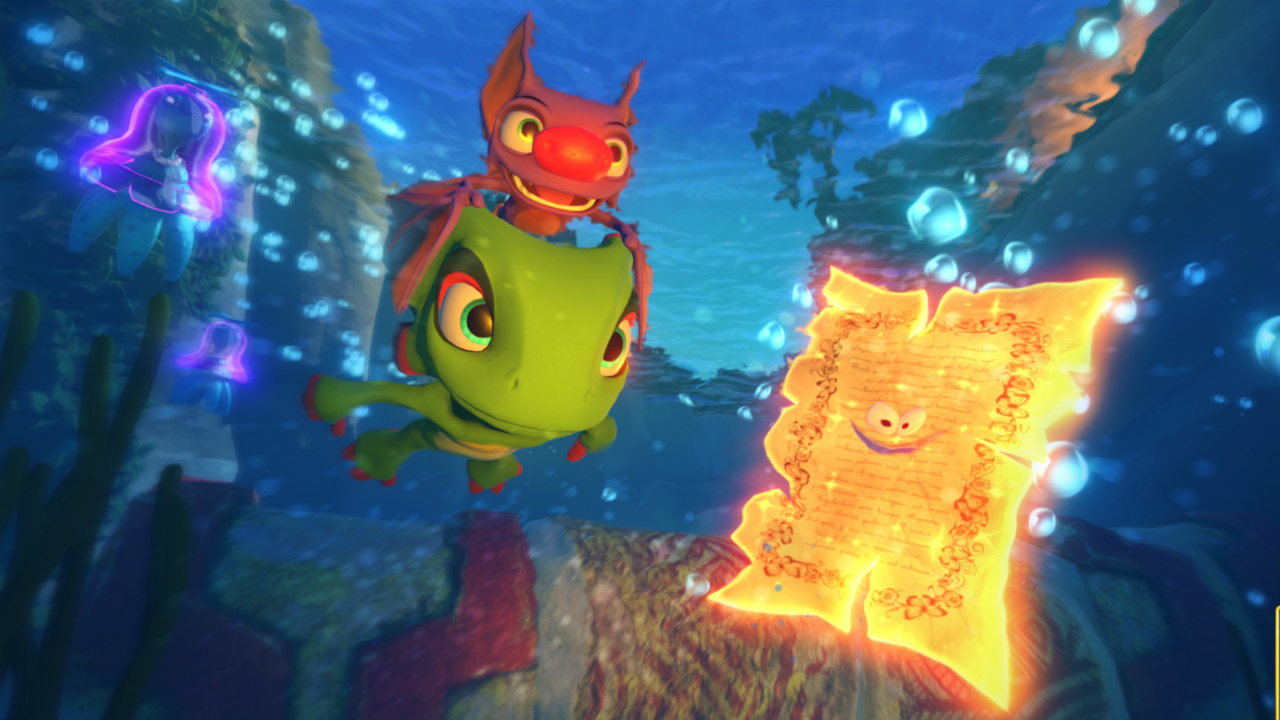
This interview was conducted by Xbox: The Official Magazine in June 2016
Anyone who’s played Rare Replay will be more than familiar with Chris Sutherland’s work and voice (he is both Banjo and Kazooie). As one of the original Banjo-Kazooie team he played a key role in the rise of 3D platforming – a trick he hopes to repeat in Yooka-Laylee, the debut platformer from Playtonic Games. What is the secret to having acrobatic fun in the third dimension? Sutherland reveals all...

OXM: When you were first making Banjo-Kazooie, what things did you try and improve on from the few examples that were out there when you were making your first 3D game?
Chris Sutherland: Mario 64 was the canonical 3D game that we looked at. We examined that in a lot of ways to see what lessons we could learn and what things we liked about it, what things we didn’t like about it, and how we could perhaps improve on it. So we did use that but we were also finding our feet for the first time in 3D. We’d done 2D with Donkey Kong Country so we kind of knew how those things worked, but 3D was another environment entirely. In fact, before Banjo-Kazooie we’d actually tried using a mix of 2D and having sprites which were layered in Project Dream [the cancelled action-RPG that eventually became Banjo-Kazooie]. That was our first approach.
Obviously, in going from the SNES to the N64 it makes sense that you’d think it’s a lot more powerful, but the problem was you were now rendering in 3D. You’re going from something that was rendering 2D sprites generated from hundreds of thousands of pounds worth of rendering equipment, so they’re really detailed and look amazing. But when you wanted to have the same visual fidelity on the N64, you couldn’t just do that because the N64 wasn’t that powerful [in that regard]. So then it was a case of ‘well, how are we going to do that?’ People are going to expect this standard of game visuals-wise on the N64 but how are we going to do that?
So our first approach was to create flat sprites which were pre-rendered, which looked fine as long as you were going in a straight line. But as soon as you went in 3D, it didn’t work. Project Dream was more limited 3D, so it would tend to be viewed from above for say, a troll race that you’re running around in, or maybe you’re falling down a cavern. But there were certain sections where you’re moving sideways that were tricky, because as soon as you started to tilt the camera round, the sprites started to all interweave with each other and didn’t quite work.
We realised that the right thing to do was to move to 3D. Although we had a lot less polygons, we could still imbue some character into the characters and the world, even though that left us with a much smaller polygon count. It was still a lot of learning, because we didn’t know how to do cameras. It’s fine when you’ve got a 2D camera, we knew what we were doing there as we’d just done a whole series of games with it. But 3D was a new world for us.
Sign up to the 12DOVE Newsletter
Weekly digests, tales from the communities you love, and more
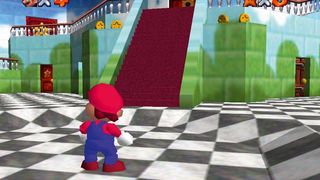
OXM: I guess there was no standard for cameras in 3D space then. I’d argue that even Mario 64’s camera was still pretty shaky...
CS: Yeah, exactly. And so there’s a case of looking at that and going ‘what are they doing there?’ In your head you have to reverse engineer it. What’s actually happening when Mario runs over there and then when he runs to the left? What are they doing? They’ve got something that’s almost like a piece of string that’s attached to Mario and the camera’s attached too. When the player moves Mario around the front of the camera, the camera might then tilt towards him but it isn’t moving much on screen.
I think they did that because they didn’t want the camera to be moving around a lot. That can disorient the player. But when you move off to the distance it just gets dragged behind Mario a bit. That approach works in some ways. But if you build your levels with lots of geometry around them, like we wanted to do, then they’re quite complex and difficult to navigate with the camera. So the challenge was ‘how do you build the game?’ versus ‘how do you develop the camera as well?’
Even just jumping onto things – an easy notion in a 2D game – you try and take that into 3D and then suddenly realise you can’t actually locate the thing in 3D to jump on to! It’s too fiddly to move this 3D stick to navigate onto something. So do you either help the player by trying to assist them, trying to gravitate them towards that? Or do you just not allow them to jump onto it? We said ‘let’s not make jumping onto things be the be all and end all, let’s take a different approach’.
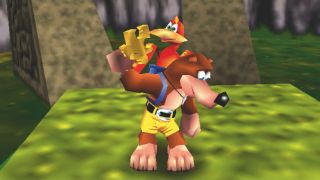
OXM: The flutter jump in Banjo-Kazooie came about by creating a character who could fly. Why is the internal logic of these mad fantasy worlds so important to you?
CS: It’s important because it helps everything connect together, and helps it to make sense. In the case of Banjo-Kazooie, originally we needed a double jump move. How is the character going to do that? What’s the logic behind this character being able to jump again in the air? Is it just because it’s a videogame or is there another reason? Okay, maybe they’ve got this backpack. Maybe there’s something in there. Some other creature with wings that could let you double jump – and that’s where Kazooie came from.
With Yooka-Laylee we started with the characters first. We decided to find characters that were interesting and then see what moves fitted them. What does a chameleon do and what does a bat do? And the things that made sense we linked together. We looked back to what we did the first time on Banjo-Kazooie. What we should have done there is start with the characters, thought about what would be cool moves they could do and then worked it out from there. We’ve taken a different approach this time, but hopefully we’ve done equally well with the results.
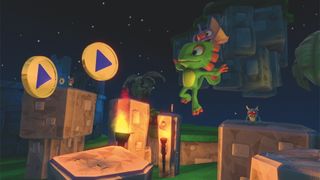
OXM: Do you feel more responsibility to address fan feedback when you’ve taken backing from Kickstarter?
CS: Some backers have actually said that they don’t want us to tell them anything. They want to go back to that era of the 1990s where they would just get a game and start playing it and that would be the first encounter they ever had with the game.
That’s a lot more difficult to do these days because you’ve got to promote your game, because you’re in an arena with so many other competing games. If we just made something and then said, ‘Hello! It’s finished now!’ I don’t know if that would work today. We can get as close to that as possible. We’ve really tried. We haven’t given a vast amount out and even when we can show you some information, we’re not going to show you everything.
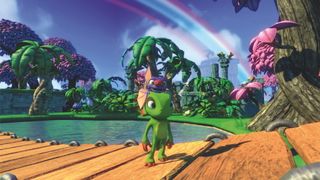
OXM: Project Dream was 16 months into development when it turned into Banjo-Kazooie. It’s hard to imagine a game that’s been funded like Yooka-Laylee transforming in such a major way. Can that be creatively restrictive?
CS: In our case we’re quite fortunate because we’ve built that kind of game before. When you’ve got the support of that number of people [Yooka-Laylee had over 80 thousand backers on Kickstarter], people are asking for this and people want this game. So there’s not a lot of ‘maybe we should try something different’. We’re not going to change it into a gritty first-person shooter... Well, saying that, there’s still time, so you never know, we might do that!
But you do have a responsibility to those backers. Originally it was a game that we were making for ourselves and we thought we’d have some support from Kickstarter. But now it’s a game that we’re making for – well, we’re hopefully making it for more than 80 thousand people! – but those 80 thousand people are waiting patiently for us to send them their copy of the game. So it does prey on your mind. Whenever you’re making a decision you think ‘is this the best thing that we’re going to do now or could we do something to make it better?’
You’ve always got that. An extra step that goes through your head. ‘How can we make this even better still?’ ‘Yeah, I think I made this good enough, but is everybody else going to be happy with this?’ ‘Does it match what people’s expectations are?’ But at the same time, if you worried too much about that then you probably would never progress anywhere, you would just procrastinate all day.
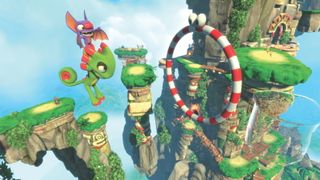
OXM: Of around 20 staff at Playtonic Games, 15 of them are ex-Rare alumni. Is that to try and emulate the conditions of what Rare was like back then or is this a new way of running things with similar people?
CS: When I started at Rare in 1989 I was on a team of two people, and then the team size gradually increased. With the last set of games I worked on there were several hundred people working on a game, so the team size is vastly different. We could see through that growth period that there were certain points where we thought this is probably the ideal team size. We thought those games back in the 1990s, perhaps that’s the best mix of size because it just works in terms of getting creative input and getting things to happen fast enough.
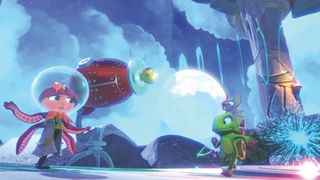
OXM: When a team gets a bit too big, what slows down the development?
CS: It’s because everybody wants to have input into the game, but you can’t have everybody deciding everything. You have to put some kind of structure in place, because if you’ve got a hundred people they’re going to need some information about how to start what they’re going to do. Then you build a hierarchy and a structure around that, and then you need people to help control and maintain that structure so it exists and you can pass communication around and that just... Even though you need that in order to build the vast games that you see nowadays, the triple-A games, it also can actually slow down development.
That feeling of, ‘Hey, I’ve got this idea! I’d really like to try it out now and see if it’s any good.’ You can show that idea to people and then it’s decided it’s going in the game. You can do that with a small team. You can’t do that as easily with a team of several hundred people.
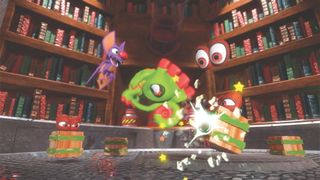
OXM: What do you think made platformers fall out of public interest?
CS: A few things. As consoles increased more in power you tended to see people trying to show off that power by making things that were more realistic and making the visuals better. It’s clearer to go, ‘hey look, this is almost real, now! This new console’s out and this is even more almost real!’ It’s how they could show this HD era off.
Games that have more of a cartoony style tend to not show off the console as well. Then once those gritty visuals become more popular and make money, it’s easier to invest in those things than it is to re-invest in something new. If you’re trying to create a new IP and spend a year and a half or longer building new characters, and then go, ‘here they are, they’re great new characters!’ and everybody goes, ‘oh, I didn’t really like them,’ then you’re kind of stuck. When people don’t like the characters, what are you going to do? It’s often for financial reasons that people will play safe. For us, when we said we’re going to make Yooka-Laylee, the Kickstarter success showed that there was a demand for it and people did want this kind of game. It meant that we could make it even bigger and better than we’d hoped to make it.
This article originally appeared in Xbox: The Official Magazine. For more great Xbox coverage, you can subscribe here.
Tom was once a staff writer and then Games Editor for Official Xbox Magazine, but now works as the Creative Communications Manager at Mojang. He is also the writer and co-creator of How We Make Minecraft on YouTube. He doesn't think he's been truly happy since he 100% completed Rayman Legends, but the therapy is helping.

